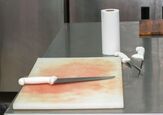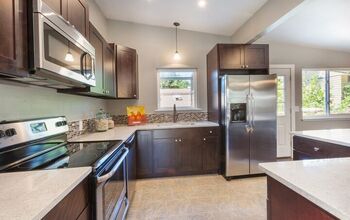What Are The Pros And Cons Of Freestanding Bathtubs?

With the stress and pressures that come with daily life, many Americans are transforming their bathrooms into spa-like retreat as a way to relax and de-stress in the comfort of their own home. In recent years, modern technologies such as radiant heat flooring, steam showers, towel warmers, and hydro-massage showerheads have emerged to help turn a simple bathroom into relaxing sanctuary.
One of the main components of these spa-inspired bathrooms are freestanding bathtubs, which have essentially replaced the Jacuzzi tubs and standard built-in bathtubs. Today, freestanding bathtubs come in a wide range of styles, designs, and finishes to complement any home décor style – ranging from timeless to contemporary.
If your goal is to convert your bathroom into the spa-like haven you deserve, you’ve likely considered a freestanding bathtub and whether or not they are worth the investment. Although freestanding tubs are generally more expensive than the alternative, there is much to consider about these luxurious plumbing fixtures.
Do You Need a Walk-In Tub Installation or Replacement?
Get free, zero-commitment quotes from pro contractors near you.

Freestanding Bathtub Basics
These timeless, old-world style bathtubs relinquish the noise and force of bubbling jets in favor of a deep, tranquil soak. Freestanding bathtubs are those that rest on the floor by themselves instead of attaching to a tub surround. Although these tubs can be placed pretty much anywhere in a space, it’s recommended to allow for at least four inches of space between the bathtub and a neighboring wall.
Freestanding bathtubs come in a wide range of finishes and materials, including copper, enamel, and wood, often featuring accents like traditional claw feet or more organic, modern forms. They range size from 43 inches in length all the way up to 78 inches long. These long bathtubs are excellent if you desire a tub that covers both your chest and knees at the same time. Though, you will need to have sufficient space to accommodate a freestanding bathtub.
For those who have the space in their bathrooms, freestanding tubs can make a statement by adding a sculptural element. In most cases, these tubs are ideal in a non-urban setting because of the weight and space limitations. Freestanding tubs can be difficult to fit into apartments, but in single-family homes and large condos, they add a sense of luxury and sophistication.
Pros of Freestanding Bathtubs
Undeniably, freestanding bathtubs are a necessity when it comes to designing a luxurious bathroom space. When it comes to aesthetics, nothing quite stands up to the visual impact that these tubs create. With this in mind, here are some of the advantages you can expect when choosing to go with a freestanding tub in your bathroom:
- Options. With so many options to choose from, a freestanding bathtub can complement any style. From the traditional claw-foot tubs to the more modern egg shape design, there truly is no limit to the variability of these bathtubs. With freestanding tubs, you are not limited by what must fit between your walls or into tile. Therefore, the designers are able to create more creative shapes and designs.
- Appearance. Most people that opt for a freestanding bathtub do so because of their appearance. These tubs are very unique, creating a statement that is often associated with lavishness. In fact, most high-end spas feature freestanding bathtubs.
- Ease of installation. Since they do not require any extra framework or support, tiling or grouting, freestanding bathtubs are incredibly easy to install in virtually any bathroom. Instead of having to install a contractor, you’ll likely only need the assistance of a plumber, which saves you on installation costs.
- Placement. With freestanding bathtubs, you can use your space more creatively. While standard built-in tubs require two or more walls for the installation, pretty much anything goes with freestanding tubs.
- Simple maintenance. Since freestanding tubs are not framed or tiled into a wall like standard tubs, they are much easier to clean and maintain. You do not have to worry about cleaning any surrounding elements such as tiles, glass, and grout. In fact, it’s very easy to keep your freestanding bathtub looking sparkling at all times.
- Can be easily replaced. With no dismantling or reframing required, freestanding bathtubs are very easy to replace when the time comes. No structural changes have to be made to your bathroom.
Cons of Freestanding Bathtubs
Although freestanding bathtubs clearly offer a number of advantages, like all things, they do come with some drawbacks. These include:
- Price. The cost of freestanding bathtubs is often one of the main reasons that homeowners decide against them. When compared to standard built-in tubs, freestanding tubs are typically more expensive – even when installation is factored in. The higher price tag has to do with the fact that these tubs are more complicated to build and feature more intricate design elements.
- Size. Most freestanding bathtubs are designed for larger-sized bathrooms. If you want one for a mid-sized bathroom, there are limited options. Due to their size, you may find that some of freestanding tubs are difficult to get in and out of and some are too tall to lean over the edge. This can become a problem when you’re bathing a child or pet.
- Weight. Freestanding bathtubs are incredibly heavy and cannot be moved once they are installed. So, you must be completely sure about its placement, as you cannot shift it afterward without professional help. Oftentimes, these tubs may require that you have a reinforced floor underneath to be able to sustain the weight of a full tub – particularly with fiberglass models.
- Storage. When compared to built-in tubs, freestanding bathtubs tend to have fewer options in terms of accessible storage. These tubs lack an edge for placing your shampoo, soap, candles, and other toiletries. Though, this problem can be remedied by installing a shelf near the bath or using a rolling caddy.
- Showerless. If you want to combine a shower and a bathtub, a built-in tub is always the best way to go. While it is possible to mount a shower to a freestanding bathtub, it requires a wrap-around curtain and tends to look awkward.
Freestanding Bathtub Materials
From fiberglass, acrylic, and cast iron to stone, copper, and stainless steel, freestanding bathtubs come in a wide array of materials. Each material comes with its own unique advantages and disadvantages. As such, you should choose the material carefully, ensuring that it is suitable for your bathroom.
Although you have a number of options to choose from, cast iron, stone resin, and acrylic are the most common materials used in the construction of freestanding bathtubs.
Cast Iron
Cast iron freestanding bathtubs will likely last you forever, and they are resistant to scratching, chipping, and fading. These tubs are also excellent at heat retention and come in a wide range of colors. Many are attached to these tubs for their classic, traditional appeal.
Although cast iron takes the prize when it comes to durability, their heavyweight and high price point are their biggest disadvantages. Their weight makes them unsuitable for many bathrooms, or they must be installed over reinforced floors.
Acrylic
Acrylic tubs are the most popular option when it comes to freestanding bathtubs, as they are durable, affordable, and versatile. Aside from being strong, they are lightweight which makes them easier to install and carry – particularly on upper levels. Unlike cast iron, acrylic tubs do not require floor reinforcements.
Their smooth, comfortable surface is ideal for bathing. As a non-porous material, acrylic is resistant to discoloration and staining, as well as scratching. Though, it is more prone to cracking. Since the material is highly malleable, it can be molded into many different shapes. As such, you’ll find acrylic freestanding tubs in a wide array of styles – from traditional to modern.
Solid Surface
Relatively new on the market, solid surface material is a composite material that is usually a combination of acrylic and resin. It is a low-maintenance, high-quality material that provides the durability and quality of stone without the heavyweight. Solid surface materials retain heat well, and these tubs come in a variety of colors, sizes, and shapes.
Stone Resin
Stone resin is an engineered composite that consists of dry ground marble, Dutch polyester resin, and limestone filler. The material is manufactured with non-toxic materials that are lead-free, none-leaching, non-porous and unaffected by shifting humidity or moisture.
Fiberglass
When it comes to price, fiberglass is the least expensive option for freestanding tubs. These tubs are also really easy to install, but have a higher risk of fading, scratching, and cracking.
Copper
Traditional copper and brass bathtubs conduct heat at incredibly high temperatures. They are also wildly expensive and high-maintenance. However, the advantage to copper freestanding tubs is that they offer either a vintage or modern decorative impact and create a stunning focal point in your bathroom.
Do You Need a Walk-In Tub Installation or Replacement?
Get free, zero-commitment quotes from pro contractors near you.

Final Thoughts
Whether you think the advantages of freestanding bathtubs outweigh the disadvantages or not ultimately comes down to your individual situation. If you have the space, like the look of freestanding tubs, and they fit within your budget, why not consider a more stylish fixture for your bathroom? Though, if you prefer the simplicity and practicality of a standard built-in tub, there is still plenty of variety out there to choose from.
Related Guides

Jessica considers herself a home improvement and design enthusiast. She grew up surrounded by constant home improvement projects and owes most of what she knows to helping her dad renovate her childhood home. Being a Los Angeles resident, Jessica spends a lot of her time looking for her next DIY project and sharing her love for home design.
More by Jessica Stone



























